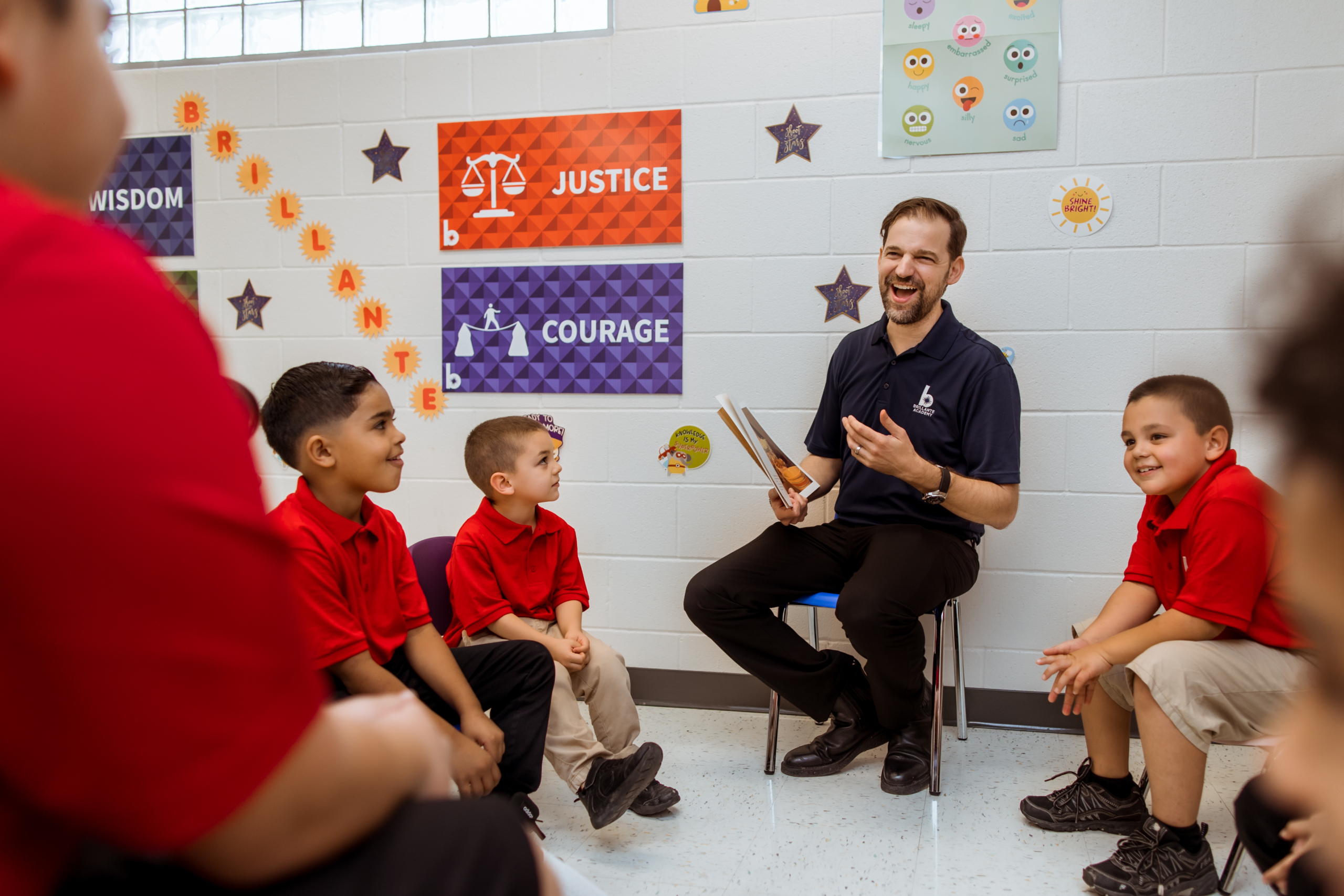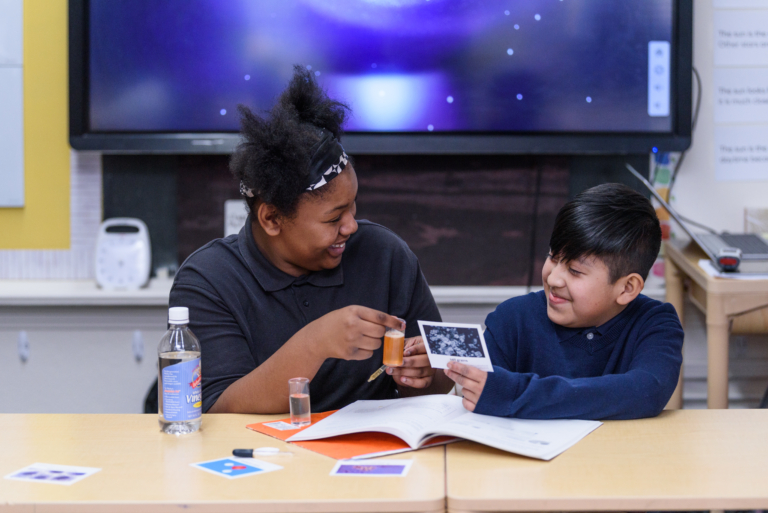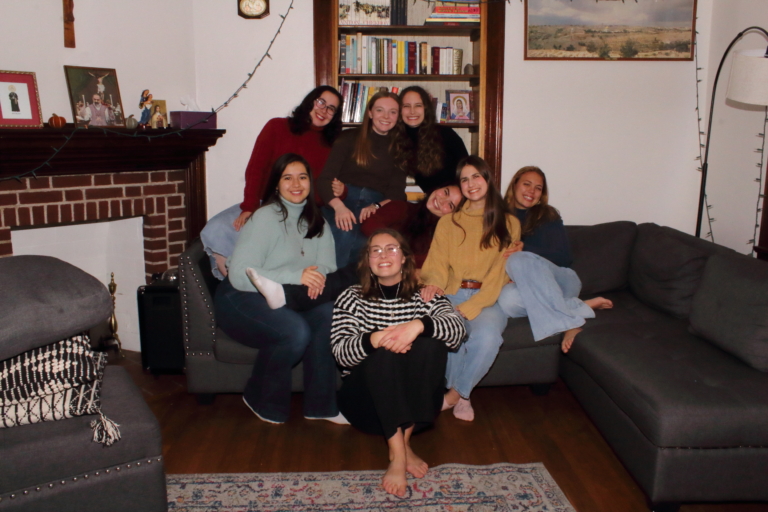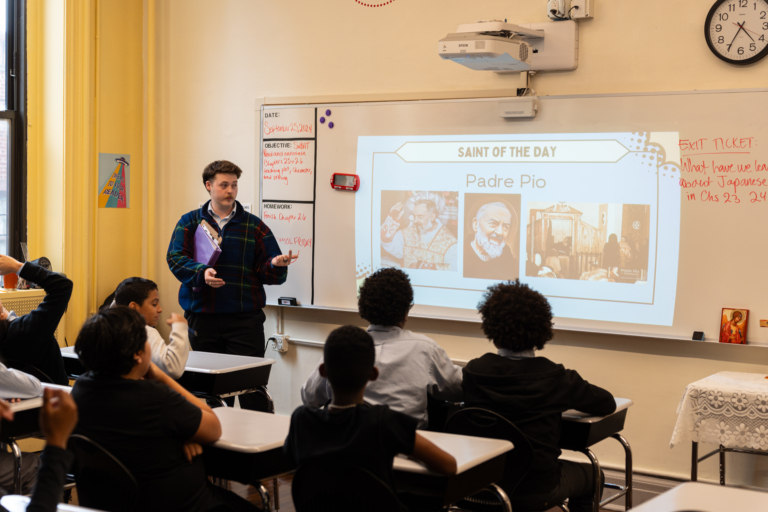We sat down to interview Aaron Brenner, one of our general partners, and chief of charter school growth for new regions. In the interview, Aaron speaks on his career in and passion for education, how he came to Seton, and his vision for Brillante Academy (opening its doors in Fall 2022) and for the Seton Teaching Fellows program in South Texas.
First off, I’d love to hear your short bio. Where you grew up, where you went to school, your history in education, and a short “Why Seton?”
I’m originally from Detroit, and until 8, I was raised in southeast Michigan. My parents are both natives of Detroit, and they still live there, so I have a lot of ties to the city although I haven’t lived there in 30 years. I went to college out of state, Rhodes College, which is a liberal arts college in Memphis, Tennessee. Rhodes has a lot of classical content and approach, so it has a lot of alignment with Brilla. I later went to Stanford University for graduate school.
I’ve worked in education for over 25 years. Initially, I was a 1995 TFA [Teach for America] Corps Member right here in the Rio Grande Valley, where I live now, so life comes full circle! At that time, I taught less than a mile from the Rio Grande at a historic school that was started over 130 years ago called Run Elementary. It serves migrant farm workers, children who live on the ranches, and the colonias all along the border. That experience welcomed me to the Rio Grande Valley, to Texas, to working with Latino children and families, and really guided my work. I started a cultural arts center in that city, a 501c3, called Proyecto Derecho del Corazón. So, even though the TFA commitment is just two years, I ended up staying there for eight years.
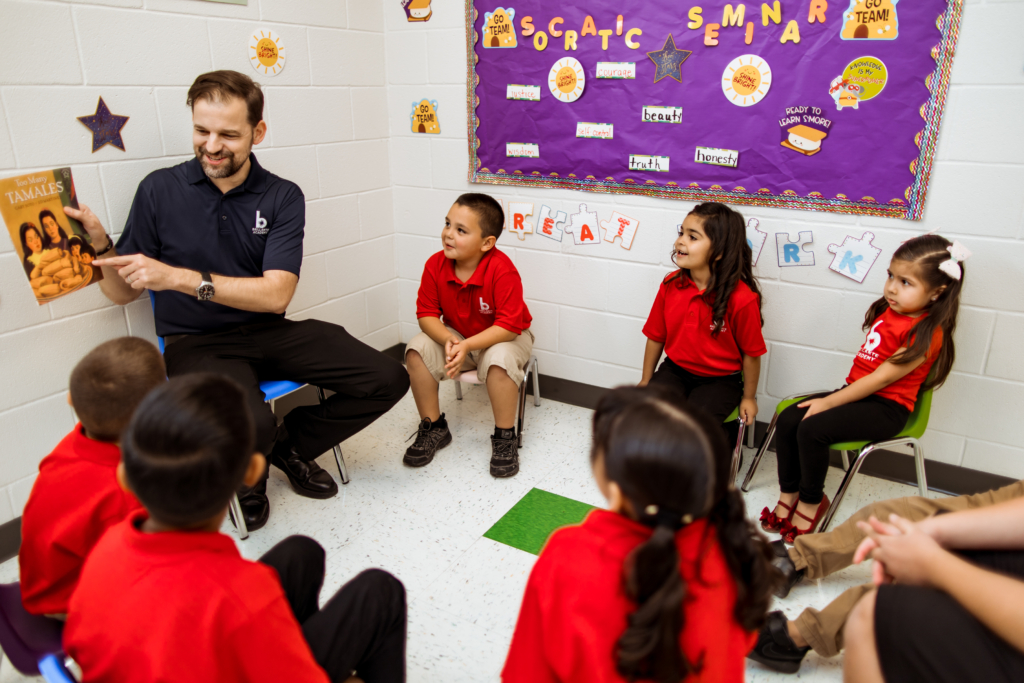
Later, I went on to design, found and lead the very first KIPP elementary school called “SHINE”, which, of course, is the English form of “Brilla.” After leading SHINE, I then went on to start a global network of schools called “One World.” We were focused on building the capacity of leaders and mission-aligned educators in Mexico, Chile, India, South Africa, and Israel. I did that for several years and then crossed over to become an advisor and part-time faculty, and later became full-time faculty and a director, at the University of Notre Dame. Most of my work there was with the Alliance for Catholic Education. It was the first time in my 25 years that I was able to formally work with a Catholic-focused entity.
Why Seton? I’ve known Stephanie (Saroki de García) now for 15 years. I knew her when she was at the Philanthropy Roundtable. She brought a large group of benefactors to SHINE and was as amazing at that job as she is at Seton, where she is the co-founder and managing director. We got to know each other through that lens. Scott Hamilton, her founding partner of Seton, worked with me at KIPP. He was the head of the KIPP Foundation, so I got to know Scott well in my 10 years with KIPP.
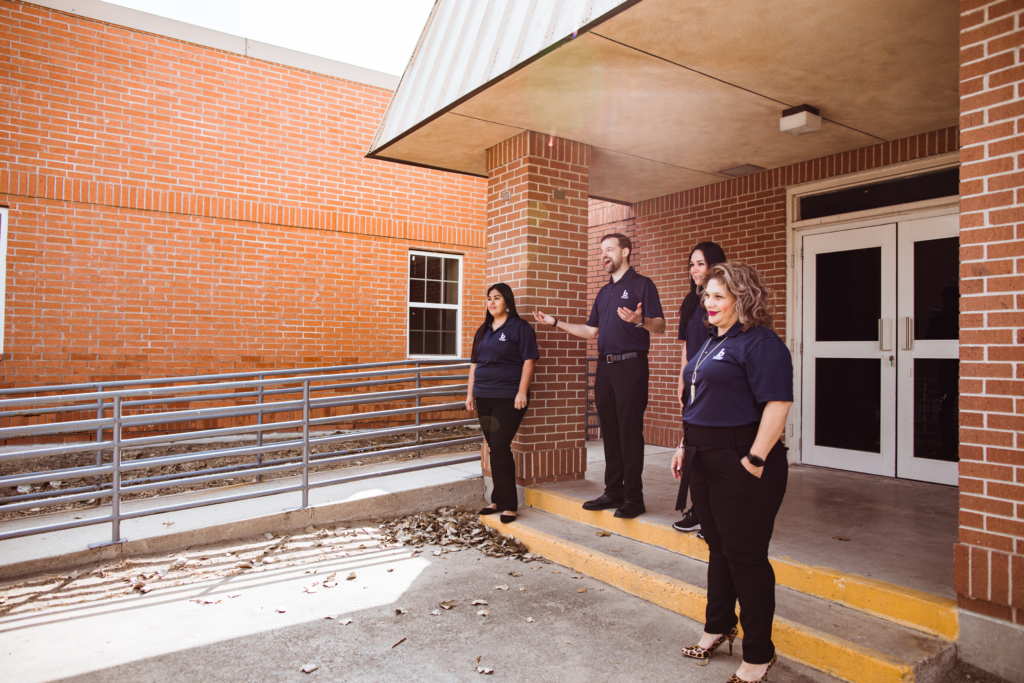
When Scott and Stephanie asked me if I was interested in helping them think through a new model for schooling, we discussed how you could take a public charter school with funding from the state, and pair it with a Catholic wraparound program that respects the separation of church and state. Ethically, morally, legally, and of course spiritually, it would be an awesome option if we could pull it off. Stephanie and Scott took that initial work and thought-partnering that we did together over 10 years ago and went to the South Bronx to open up Brilla.
As we all know, Brilla has flourished and grown and is doing an amazing job. I stayed in touch with Stephanie over the years as a friend and she would talk to me about Seton and Brilla. A few years ago she reached out and said, “Any chance that you would come on full-time with Seton and lead new charter school growth for us?” So I thought about it, and discerned as we always should, and I was really, really excited. After I visited Brilla in the South Bronx again, I felt called to transition from Notre Dame and come and join Seton full time. I’ve been with all of you at Seton Partners and the team for a little over two years full-time, and it’s the best decision I’ve made professionally in my career.
So you were involved with Seton even before it was really Seton!
Ha—yes! I remember sitting with Stephanie and Scott in San Diego years ago. My daughters were 2 and 3. We met for a couple of days, we put pen to paper, and we built out a framework and a design and a model for this school which took on the name later of Brilla. I then had a chance to coach and support Aaron Gillespie, who was the founding school leader of Brilla, as he trained to be a principal at KIPP SHINE. I got to know them all as an advisor, friend, and thought-partner in those early stages of the work.
How do you know Spanish?
When I came to the Valley in ‘95, I had never studied Spanish. I had studied French for seven years, and I was a Russian minor in college after studying it for eight years. I lived in the Soviet Union for a little while. I also lived in South Africa for a few months and studied Zulu. I had all this language exposure, but none in Spanish, so I was very naïve when I showed up at the border.
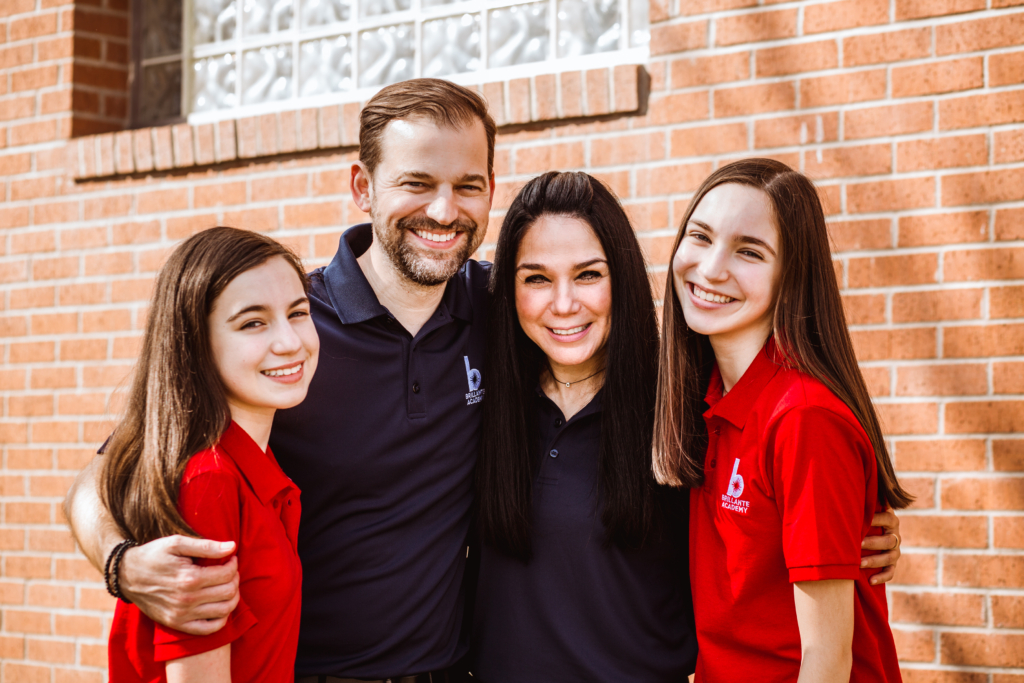
I knew that Spanish was a prominent language, but when I walked into that 2nd grade classroom of 29 kids, and 26 of them spoke almost no English, I knew I was in for a wake up call. I did what I could do informally, but it really wasn’t until I met my wife—who was born in the U.S., raised in Mexico, and then came to the U.S. full-time to go to the University of Texas—that I really learned Spanish. Part of it was courting and getting to know her, when I was 28 years old. Then, I spent a lot of time in Mexico, and obviously with my families and students.
When I was a principal I made a pledge that I never want anyone to have to translate a conversation for me. So as hard as it’s going to be, I’m going to make sure that I throw myself into the fire. I visited hundreds of homes and apartments to recruit our first 114 four-year-olds. I have never had to have anyone translate a conversation with my wife’s family. My wife only speaks Spanish to my daughters and it’s a true bilingual home, so my Spanish is pretty good now.
Growth with quality is something that we talk a lot about within Seton, with new schools in the North Bronx and Cincinnati last year, and a new school in Texas next year. We have plans for significant growth in the upcoming years, and you are Seton’s Chief of New Charter School Growth. What does your role entail and what do you especially love about this work?
I’m glad you brought up Cincinnati because I’m so impressed by what Jeff, Tom, John—and the whole team—have pulled off. It’s quite the feat. The growth is rightly measured by focusing on one community and one school, Romero Academy in Price Hill, before considering the invitation to take on other schools in Ohio and hopefully other states. I think that the Catholic Romero Academy model is just amazing.
Through the lens of new charter school growth, you said it: it’s important to have quality. When we look at potential places where we can grow, we want to ensure that we have enough funding so that we’re able to operate not just a sustainable school, but a school that can really thrive, a school that can provide access to resources and teaching that our students need and deserve in the communities that we choose and hopefully are invited to serve in. I think that quality also represents growing thoughtfully. For example, in the state of Texas when we open Brillante in the fall of 2022, we are going to start with only three grades—so it will be pre-K, Kinder, and 1st. We’ll grow one grade level at a time, and our hopeful goal is that this will be a preK through 8th grade school. Why preK? I have a background in early childhood education and believe deeply that the earlier we can start, the better, so that excites me in terms of growth.
Any state that we look at, we really want reliable funding that will allow us to operate and reach a point where our schools are thriving, and because of that, we’re able to start smartly with two, maximum three, grade levels at a time, and then grow one grade level a year, and take on that individual school rather than try to start a bunch of schools at the same time.
I don’t fault or critique my friends in the charter world who are taking a different approach. They want to grow quickly and that’s their choice. We at Seton, with Brillante and Brilla and Romero, we really do believe and adhere to the idea of a community-based school that is high quality. We want to start one school at a time, and make sure that school represents and reflects the values and the ethos of our community, and we’re able to bring in the model of education that we so fully believe in and have had so much success with.
We think that the sky’s the limit. Our schools not only affect the children and families they directly serve, they become models and exemplars for what’s possible, and I’ve found in my career, that often has as much of an impact on education, on growth, on faith, on hope, as that direct service does—and we can never ignore the impact that that has. That’s why we do what we do—building exemplars and models that can inspire others beyond Seton to open more quality schools for children and families. We can only do that, I think, if we really focus in a smart, thoughtful, community-based way.
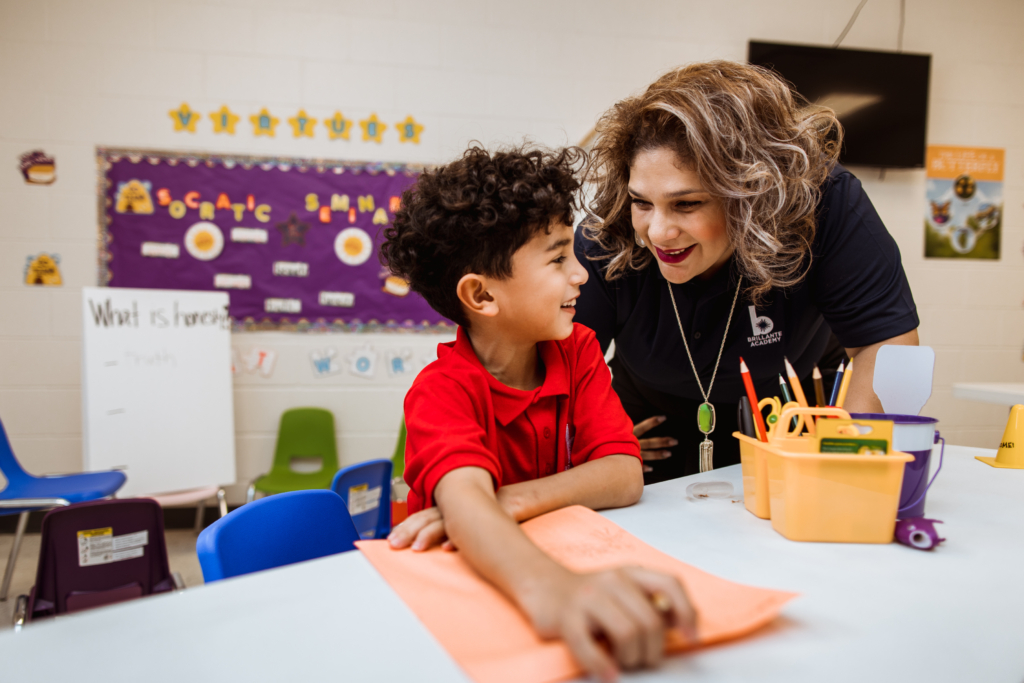
You’re spearheading the launch of Seton’s second network of charter schools paired with Catholic after-school programs—Brillante plus El Camino—in Texas’ Rio Grande Valley. You’ve spent significant time in our Brilla schools in New York and experienced their vibrant culture. Geography plays a big role in school culture, so Brillante will likely have its own flavor. What of Brilla’s culture do you hope to bring to Texas? How do you hope Brillante will be unique?
We’re going to honor and replicate El Camino and of course the Seton Teaching Fellows program here in the Rio Grande Valley and wherever else Brillante goes. That’s going to be a non-negotiable mainstay of the program. I’ve been so welcomed by our teammates at Brilla. Because of that, I’ve been able to get access to the rich content, the infrastructure, the processes that we can learn from and leverage wherever we go with Brillante.
From a character formation lens, we want to be as aligned as possible. We want to teach and live and form the same core virtues of wisdom, courage, justice, and self-control. We have our own local flavor and we can find ways through local stories and proverbs and traditions to teach those shared virtues, and at the same time, there’s amazing content that the Brilla schools have developed. I have a deep background in building school and organizational culture, and I’m just really excited to be part of a national team that loves and is as committed to that as I have been all my life and continue to be.
Like Brilla, we want to have a classical-plus program so our students have access to and are taught and engage with Paideia and Socratic seminars with really rich content from across the centuries. Emphasizing the “plus,” our community is 95+% Latino and we want content and voice that represents and reflects our community’s culture through literature and poetry and songs and non-fiction and essays. We commit to that being part of our schools. Doubling down even further on the academic program, we will have robust blended learning, leveraging the great work at Brilla and Romero and Seton’s Blended Learning program.
Something that will be a little bit different—in Mission, where Brillante’s first school will be located—even though nearly every child is Latino and 75% come from Spanish-speaking homes, families without means don’t have access to robust two-way dual language education. That’s something that’s been reserved for communities that are more affluent or on the north side of town. To me, getting back to our virtue of justice, we want to provide the best option for our children and families, through which we know as experienced educators, will really allow them to excel. Our principal, Cecilia, is from the Valley and is a big believer in dual-language. So she is going to be an amazing principal to help implement and execute that on the school level. This is a big distinction between Brilla and Brillante. Brillante will have double literacy and math blocks in English and Spanish. Even in science, we’ll integrate Spanish. We’ll also implement a multilingual virtue-based curriculum.
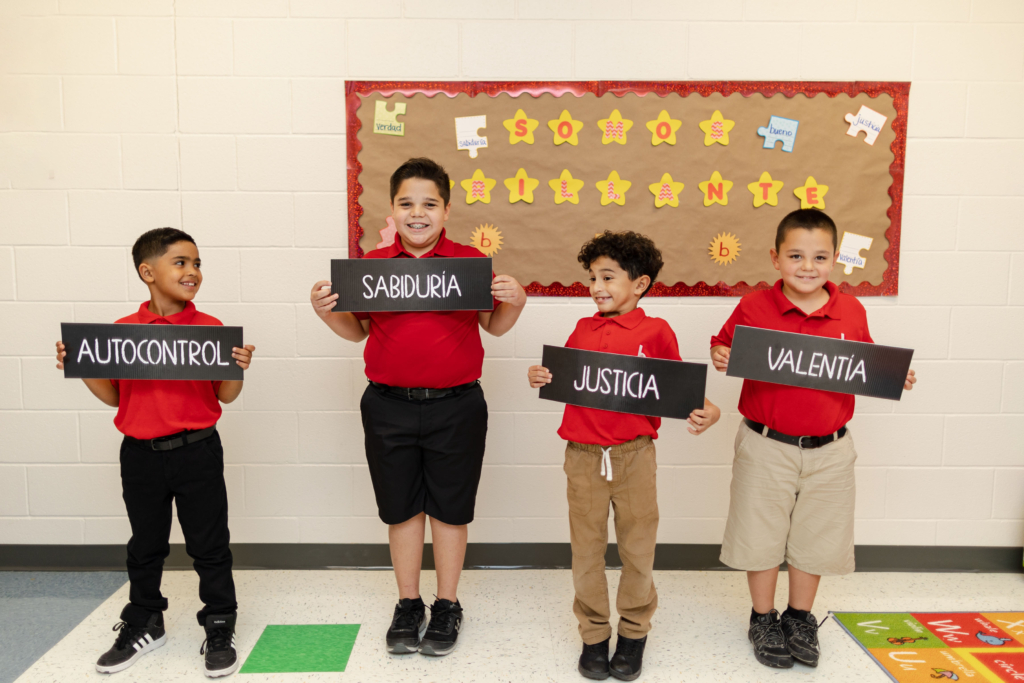
Within your time at Seton, you’ve made it a point to spend time with the Seton Teaching Fellows in New York and to get to know the Fellows program. Next year you’ll welcome 8 Seton Teaching Fellows to Texas! What has struck you about your experiences with the Fellows thus far, and what is your vision for future Texas Fellows?
I’d say first of all that one of the reasons I was so interested in the community is that I was blown away by the quality of the people involved. From the Seton Teaching Fellows themselves, to those who have dedicated their time to working in support of the Fellows. They were all so welcoming and open. Anything I have asked them about the content, about formation, about living in community, I have always gotten such thoughtful and reflective answers. I was so grateful to get to witness their work. Our Fellows community in Texas will hopefully be reflective of that same quality of people.
I think that here in the Rio Grande Valley, what Seton Teaching Fellows will find is that we are ready for them. When we’ve talked to prospective parents, educators, parish and diocesan partners, they are so excited about the Fellows program. Of course, they’re excited about everything that Seton brings with the academic model of Brillante. They’re excited about all of the ingredients of Brillante, but the ingredient of Seton Teaching Fellows is like sugar in a cake or milk in ice cream: if you don’t have it, it’s just not going to be the same. It’s that core ingredient that brings everything together with commitment to faith, with vibrancy, with commitment to community and to children. To our future Fellows: “I’m just excited to have you here in the RGV. There’s nothing like you here or in Texas. Hopefully you’ll be the first in a group of Fellows who will be here for years to come.”
Mission is a community that has experienced a lot of hardships. It was particularly hit hard by COVID; we’ve had one of the highest rates of deaths of those infected of any community in the country, and we have a pretty high unemployment rate, we have a high rate of folks who are suffering from some type of mental illness, addiction, and yet it’s a community that’s never lost hope. When you come and visit, you’ll see that within two miles we actually have five Catholic parishes. The opportunity to revitalize and renew and restore hope is limitless. So we need our Fellows, we need you all to be here, and we’re excited to have you and partner with families to restore some of that hope.
Texas is known for its strong identity and culture as a state. What about Texas, specifically the Rio Grande Valley, do you think will allow the El Camino Catholic faith formation program to flourish?
It’s funny. We have a saying in Texas for those of us who are transplants like myself: “I wasn’t born in Texas, but I got here as fast as I could.” It’s a common phrase in our state. In the Rio Grande Valley we love people like the Seton Teaching Fellows, who choose to come and join this community and witness with purpose and passion and positivity. We will welcome Fellows, and I say this as a member of the community myself! I’ll be walking alongside you.
We also have a vibrant culture that is distinct to the Rio Grande Valley. Family is very important here: grandparents still live with children and grandchildren. There is this lifelong connection and it’s an integral part of our community. Having that two way dual-language program in our schools will be a part of sustaining that connection. One challenge that we’ve had is the loss of language, people losing the ability to have that deep rich communication that we need across generations as families. In the Rio Grande Valley we love festivals and parties: we often call them “pachangas,” which is a Mexican word for gathering families together. We have carne asada, bust out the piñata if it’s a birthday, when it’s Christmas, the buñuelos and Las Posadas, and on December 12 we celebrate Our Lady of Guadalupe. We talk about Juan Diego and his witness; it’s such a big part of our culture.
Our community here has one of the highest percentages of Catholics in the country—over 90% of residents are Catholic. It’s part of our faith identity which is the highest priority, but it’s part of cultural identity, too. We see buildings and streets that reflect that Catholic heritage. The fact is that El Camino is going to be a new program here. Pastors and catechists here, some of whom are friends of mine, speak to the fact that we need a new breath of life, and some new energy to revitalize faith here. Even though so many of our students are Catholic, not many go to Catholic school. The idea that we can bring a vibrant, proven, world class model through El Camino to the Valley is going to change lives, transform communities, and bring people back to their faith. I can’t wait.
